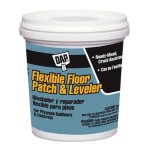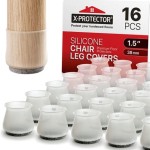How To Regrout Floor Tile In Bathroom
Regrouting bathroom floor tile is a common maintenance task that can significantly improve the appearance and longevity of the tiled surface. Over time, grout can crack, crumble, become stained, or harbor mold and mildew, detracting from the overall aesthetic and potentially leading to water damage beneath the tile. This article provides a comprehensive guide on how to effectively regrout bathroom floor tile, covering the necessary tools, materials, and step-by-step procedures.
Before embarking on the regrouting process, it is crucial to assess the condition of the existing grout and identify any underlying problems. Look for cracks, crumbling, discoloration, and signs of mold or mildew. If significant tile movement or water damage is evident, address these issues before regrouting to prevent future problems. It is also important to choose the right type of grout for the bathroom environment. Epoxy grout offers superior stain resistance and durability, making it a suitable option for high-moisture areas. Cement-based grout is another viable choice, but it may require sealing to prevent staining and water absorption.
Preparing for the Regrouting Process
Proper preparation is essential for a successful regrouting project. This involves gathering the necessary tools and materials, protecting surrounding surfaces, and removing the old grout effectively. The following is a detailed list of items needed:
- Grout removal tool (grout saw, oscillating multi-tool with grout removal blade, or a utility knife with a grout removal attachment)
- Shop vacuum or broom and dustpan
- Grout sponge
- Two buckets (one for clean water and one for rinsing)
- Grout float
- Grout haze remover
- Painter's tape
- Safety glasses
- Gloves
- Mixing bucket (for cement-based grout)
- Grout mixer attachment (for cement-based grout)
- Caulk (for sealing perimeter joints)
- Caulk gun
- Drop cloths or plastic sheeting
Once the tools and materials are assembled, protect adjacent surfaces, such as walls, bathtubs, and vanities, with drop cloths or plastic sheeting and painter's tape. This will prevent grout from staining or damaging these areas during the removal and application processes. Ensure adequate ventilation in the bathroom by opening windows or using a fan.
The next step is to remove the old grout. There are several methods for removing grout, each with its own advantages and disadvantages. A grout saw is a manual tool that uses a serrated blade to grind away the grout. It is relatively inexpensive and easy to use, but it can be time-consuming and physically demanding for large areas. An oscillating multi-tool with a grout removal blade is a power tool that vibrates rapidly to remove grout. It is faster and more efficient than a grout saw, but it can be more expensive and require more skill to operate. A utility knife with a grout removal attachment can be used for small areas or intricate patterns. It is important to wear safety glasses and gloves when removing grout to protect your eyes and hands.
Regardless of the chosen method, begin by running the grout removal tool along the grout lines, applying consistent pressure to avoid damaging the edges of the tiles. Work slowly and carefully, removing all the old grout down to the tile edges. Be particularly cautious around corners and edges to prevent chipping or cracking the tiles. After removing the bulk of the grout, use a shop vacuum or broom and dustpan to thoroughly clean the area, removing any remaining debris. A clean surface is essential for proper grout adhesion.
Applying New Grout
After successfully removing the old grout, it's time to apply the new grout. The specific instructions for mixing and applying grout will vary depending on the type of grout used. Always refer to the manufacturer's instructions for detailed guidelines.
For cement-based grout, mix the grout powder with water in a mixing bucket, following the manufacturer's recommended ratio. Use a grout mixer attachment on a drill to ensure a consistent, lump-free mixture. The consistency should be similar to that of peanut butter. Allow the mixture to stand for the specified slake time, typically 5-10 minutes, and then remix before application. This allows the ingredients to fully hydrate and ensures proper bonding.
For epoxy grout, which typically comes in two parts (resin and hardener), mix the components thoroughly according to the manufacturer's instructions. Epoxy grout has a shorter working time than cement-based grout, so it is important to work quickly and efficiently.
Once the grout is mixed, scoop a generous amount onto the floor tile and spread it across the grout lines using a grout float. Hold the float at a 45-degree angle and apply firm pressure to force the grout into the joints. Work in sections, ensuring that all the grout lines are completely filled. Remove excess grout from the tile surface by holding the float at a steep angle and scraping it across the tiles. Use the edge of the float to clean the grout lines, ensuring they are smooth and consistent.
Allow the grout to set for the recommended time, as specified by the manufacturer. This is typically 15-30 minutes for cement-based grout and slightly longer for epoxy grout. The grout should be firm to the touch but still pliable. At this stage, use a grout sponge dampened with clean water to remove the remaining grout haze from the tile surface. Rinse the sponge frequently in a separate bucket of clean water to avoid spreading the haze back onto the tiles. Wipe the tiles diagonally, using light pressure to avoid removing grout from the joints.
After the initial sponge cleaning, allow the grout to dry further, typically for at least 24 hours. Once the grout has fully cured, a second sponge cleaning may be necessary to remove any lingering haze. For stubborn haze, a grout haze remover can be used, following the manufacturer's instructions carefully. Be sure to test the haze remover in an inconspicuous area first to ensure it does not damage the tile.
Sealing and Finishing
After the grout has fully cured and the haze has been removed, the final steps involve sealing the grout (if applicable) and caulking the perimeter joints. Sealing the grout is particularly important for cement-based grout, as it helps to prevent staining and water absorption. Epoxy grout is inherently waterproof and does not require sealing.
Apply a grout sealer according to the manufacturer's instructions. Typically, this involves applying a thin, even coat of sealant to the grout lines using a brush or applicator. Allow the sealant to penetrate the grout for the recommended time, and then wipe off any excess with a clean cloth. Multiple coats of sealant may be necessary for optimal protection.
Finally, caulk the perimeter joints where the floor tile meets the walls, bathtub, or other fixtures. This helps to create a watertight seal and prevent water from seeping behind the tiles. Choose a caulk that is specifically designed for bathrooms and is resistant to mold and mildew. Apply a bead of caulk along the joint and smooth it out with a caulk smoothing tool or a wet finger. Remove any excess caulk with a damp cloth. Allow the caulk to cure completely before exposing it to water.
Proper ventilation during the regrouting process is crucial. While removing old grout, dust particles are released into the air, which can be harmful if inhaled. Also, the chemicals in grout and sealers can sometimes release fumes. Opening windows and using a fan will help to dissipate these fumes and keep the air clean. In some cases, wearing a respirator may be advisable, especially if you are sensitive to dust or chemicals.
Maintaining the newly regrouted floor is important for preserving its appearance and longevity. Regular cleaning with a mild detergent and water will help to prevent the buildup of dirt and grime. Avoid using harsh chemicals or abrasive cleaners, as these can damage the grout and tile. Promptly address any spills or stains to prevent them from setting. Inspect the grout periodically for cracks or damage and make any necessary repairs promptly. Recaulking the perimeter joints every few years may also be necessary to maintain a watertight seal.
Regrouting bathroom floor tile is a manageable DIY project that can significantly enhance the look and functionality of the bathroom. By following these detailed steps and taking the necessary precautions, a professional-looking result can be achieved that will last for years to come.

How To Regrout Your Shower Tiles Tips And Tricks For A Professional Finish

Regrouting A Bathroom Floor
How To Regrout Bathroom Tiles A Complete Guide Timesproperty

Regrouting A Bathroom Floor Youtube

How To Regrout Tile With Simple Step By Instructions

Regrouting Tile Regrout Sir Grout

How To Regrout Tiles Without Removing Old Grout

Regrout Bathroom Tiles Black Diy Upgrade

How To Regrout Tiles Step By Guide

How To Regrout Floor Tile Knowledge Foshan Hanse Co Ltd







